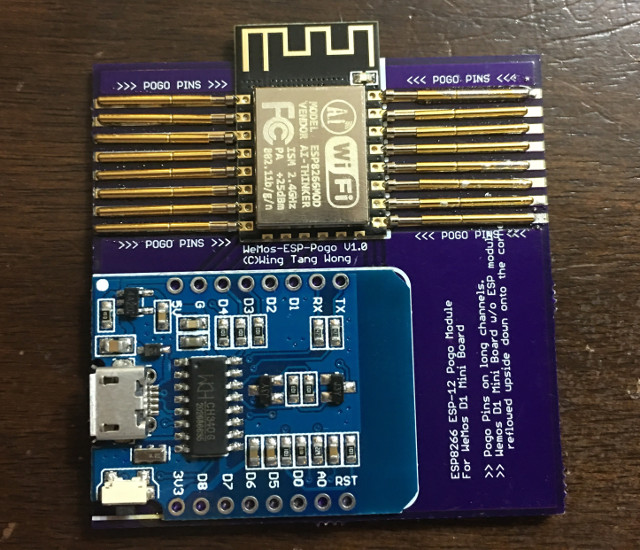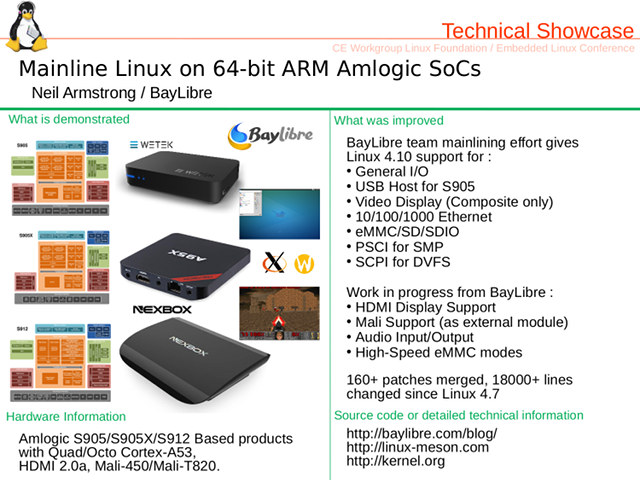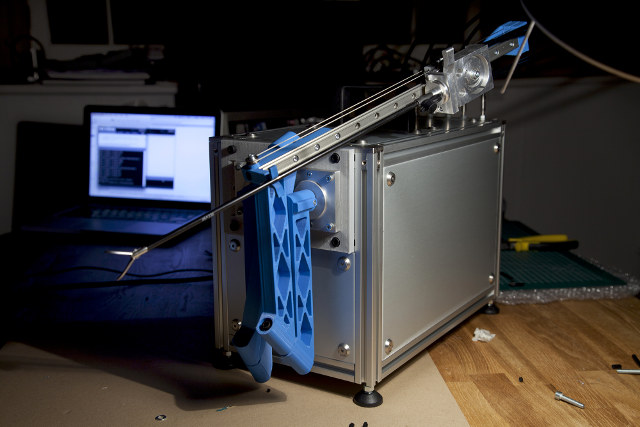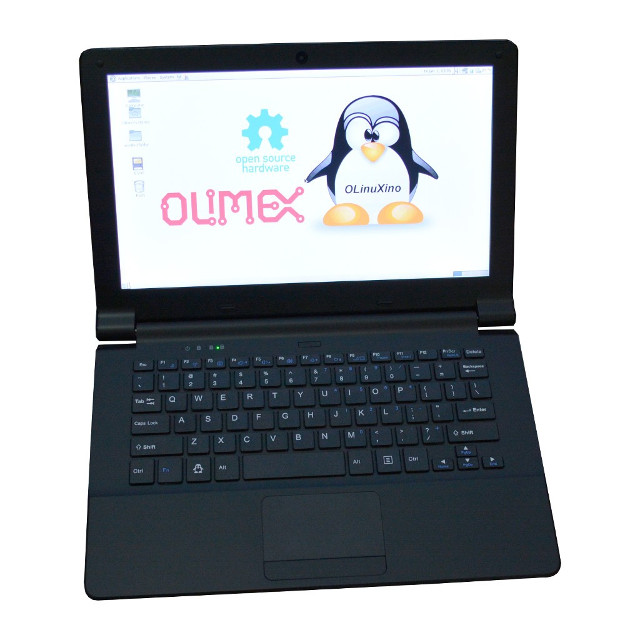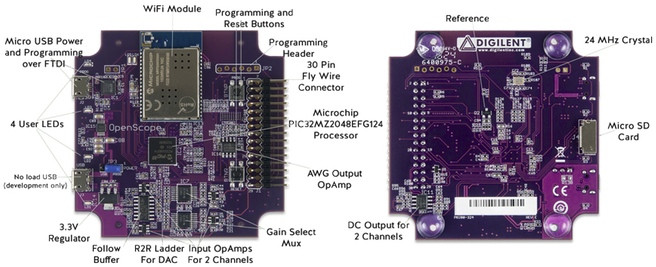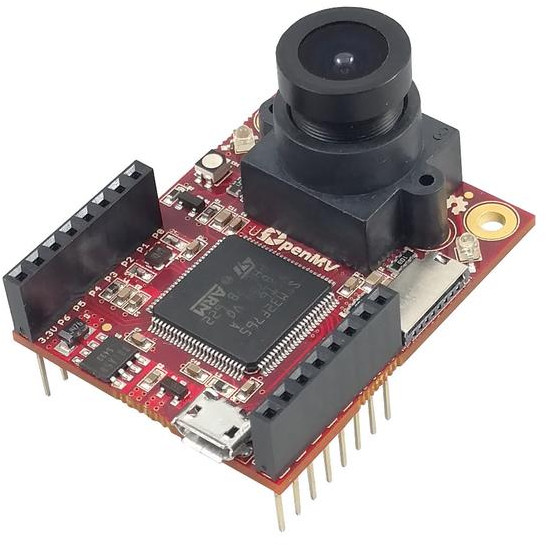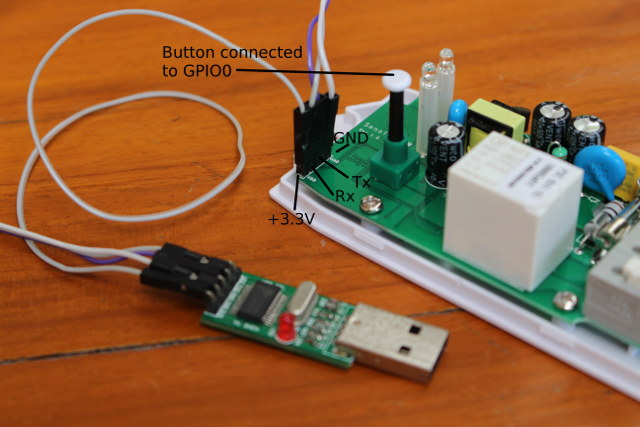If you have many ESP8266 modules to flash with your own firmware this may be time-consuming, but Wing Tang Wong’s ESP8266 Pogo Jig Programming Board could greatly streamline the process, as it just hold ESP-12F module in place using pogopins, so you can go through boards quite quickly. You’ll just need to a Wemos D1 mini board without ESP-12F module to the programming board, and then place your ESP-12F module (or compatible) between the pogopin to program it through Wemos D1 mini’s micro USB port. The board is not for sale (yet?), but the EAGLE design files can be found on Github, and it should not be difficult to find a company to manufacture a few if you need it. Via OSH Park’s Blog. Jean-Luc Aufranc (CNXSoft)Jean-Luc started CNX Software in 2010 as a part-time endeavor, before quitting his job as a software engineering manager, and starting to write daily […]
Mainline Linux on 64-bit ARM Amlogic SoCs, and TV Boxes such as Wetek Hub / Player 2, NEXBOX A1 / A95X, etc…
We’ve already seen Neil Armstrong, part of BayLibre, worked on adding Amlogic SoC (S905/S905X/S912) to mainline Linux via our virtual schedule for the Embedded Linux Conference & OpenIoT Summit 2017. But at the time, although we could see some activity in Linux 4.10 including support for Nexbox A95X and Nexbox A1, they did provide that much details the work that had been done, but since then, ELC 2017 videos have been released, and BayLibre wrote a short post about 3D Graphics support in mainline Linux. We can see that I/Os, USB host, composite video output, Ethernet, eMMC/SDIO, and PSCI and SCPI features have already been added to Linux 4.10. but some important features have not yet including HDMI, Mali support, Audio, and high speed eMMC modes. HDMI is actually planned for Linux 4.12, which could be released in about 18 weeks if we keep the 10 weeks kernel release schedule […]
Open Surgery Initiative Aims to Build DIY Surgical Robots
Medical equipments can be really expensive because of the R&D involved and resulting patents, low manufacturing volume, government regulations, and so on. Developed countries can normally afford those higher costs, but for many it may just be prohibitively expensive. The Open Surgery initiative aims to mitigate the costs by “investigating whether building DIY surgical robots, outside the scope of healthcare regulations, could plausibly provide an accessible alternative to the costly professional healthcare services worldwide”. The project is composed of member from the medical, software, hardware, and 3D printing communities, is not intended for (commercial) application, and currently serves only academic purposes. Commercial surgical robots can cost up to $2,000,000, but brings benefits like smaller incisions, reduced risks of complications and readmissions, and shorter hospital stays thanks to a faster recovery process. There have already been several attempts within the robotics community to come up with cheaper and more portable surgical […]
Olimex Teres I A64 DIY Open Source Hardware Laptop Kit Design Complete, To Sell for 225 Euros
Olimex has been working on an open source hardware Olimex A64 laptop for a little over a year, and the company has now complete thed hardware design of their TERES I laptop, and are working on finalizing the software design before accepting orders for 225 Euros for TERES-A64-BLACK and TERES-A64-WHITE models. As explained in the instructions manual, Olimex laptop will not be sold assembled, but as a kit to let the users assemble the following parts themselves: TERES-006-Keyboard QWERTY keyboard TERES-023-Touch touchpad with TERES-022-Touch-Cover and TERES-010-Touch-Btns TERES-014-Screw-Set with 42 pieces of different kind of screws. TERES-PCB3-Touch PCB TERES-PCB2-IO PCB with headphone jack, micro SD slot, and a USB port TERES-PCB4-Btn PCB for the power button together with TERES-009-Pwr-Btn plastic and TERES-013-LED-pipe TERES-PCB1-A64 motherboard based on Allwinner A64 processor. TERES-PCB5-KEYBOARD keyboard control board Display parts: TERES-008-LCD-Back, TERES-016-Hinge-Set, TERES-007-LCD-Frame, and TERES-015-LCD 11.6″ LCD panel TERES-019-Camera & TERES-020-Camera-Lens for the webcam Speakers, battery,WiFi […]
$79 Digilent OpenScope Open Source Multi-function Programmable Instrument Works over USB and WiFi (Crowdfunding)
Digilent OpenScope is an open source, portable, multi-function programmable instrument used for capturing, visualizing, and controlling analog and digital signals, that works with your smartphone or computer over USB or WiFi, and it can also be used in standalone mode as a development board, like you would use an Arduino or Raspberry Pi board. OpenScope MZ key features and specifications: MCU – Microchip PIC32 MZ (MZ2048EFG124) MIPS Warrior M-class micro-controller @ up to 200 MHz with 2048KB flash, 512 KB RAM External Storage – micro SD slot Wireless Connectivity – WiFi module USB – 1x micro USB for power and programming over FTDI Programming / Debugging – micro USB port, programming header Expansion – 30-pin Fly Wire connector with: 2x scope channels with 12 bits @ 2 MHz bandwidth and up to 6.25MS/s sampling rate 1x function generator output with 1 MHz bandwidth and up to 10MS/s update rate 10x […]
FOSDEM 2017 Open Source Meeting Schedule
FOSDEM (Free and Open Source Software Developers’ European Meeting) is a 2-day free event for software developers to meet, share ideas and collaborate that happens on the first week-end of February, meaning it will take place on February 4 & 5, 2017 this year. FOSDEM 2017 will features 608 speakers, 653 events, and 54 tracks, with 6 main tracks namely: Architectures, Building, Cloud, Documentation, Miscellaneous, and Security & Encryption. I won’t be there, but it’s always interesting to look at the schedule, and I made my own virtual schedule focusing especially on talks from “Embedded, mobile and automotive” and “Internet of Things” devrooms. Saturday 4, 2017 11:00 – 11:25 – Does your coffee machine speaks Bocce; Teach your IoT thing to speak Modbus and it will not stop talking, by Yaacov Zamir There are many IoT dashboards out on the web, most will require network connection to a server far […]
$55 OpenMV Cam M7 Open Source Computer Vision Board is Powered by an STM32F7 Cortex-M7 MCU
I wrote about Jevois-A33 computer vision camera based on Allwinner A33 quad core Cortex A7 processor last week, and today, I’ve come across OpenMV Cam M7 open source computer vision board based on a much less powerful STMicro STM32F7 ARM Cortex M7 micro-controller, but with the advantage of consuming less power, and exposing some extra I/Os. OpenMV Cam M7 board specifications & features: MCU – STMicro STM32F765VI ARM Cortex M7 @ up to 216 MHz with 512KB RAM, 2 MB flash. External Storage – micro SD slot Camera Omnivision OV7725 image sensor supporting 640×480 8-bit grayscale images or 320×240 16-bit RGB565 images at 30 FPS 2.8mm lens on a standard M12 lens mount USB – 1x micro USB port (Virtual COM Port and a USB Flash Drive) Expansion – 2x 8-pin headers with SPI, I2C CAN bus, asynchronous serial bus (Tx/Rx), 12-bit ADC, 12-bit DAC, 3x I/Os for servo control; interrupts and PWM on […]
How to Build and Flash ESPurna Open Source Firmware to Sonoff POW Wireless Switch
ITEAD Studio Sonoff family is comprised of various inexpensive ESP8266 WiFi power switch, and the company sent me two of their latest CE certified models with Sonoff TH16 + external temperature & humidity probe, and Sonoff POW to measure power consumption. I checked the hardware is the first part of the review, and used Sonoff TH16 to control a water pump with the stock firmware and Ewelink Android app in the second part. It works reasonably well, but it relies on the cloud, so if you lose your Internet connection or the service closed, you can’t control the relay manually anymore. Luckily, the UART pins are exposed on Sonoff switches so you can solder a 4-pin header and connect a USB to TTL to flash your own firmware. Please don’t connect Sonoff devices to the mains when programming them, it’s very dangerous, instead the USB to TTL board will power […]


